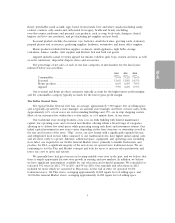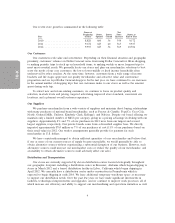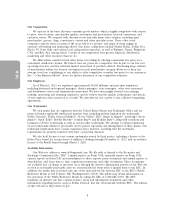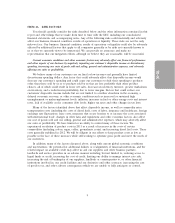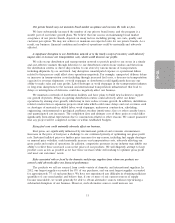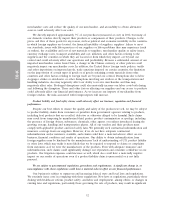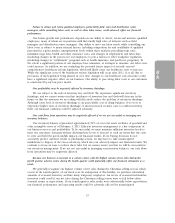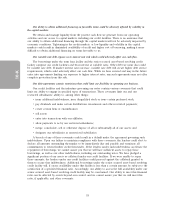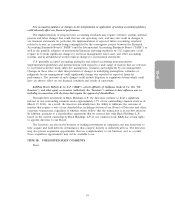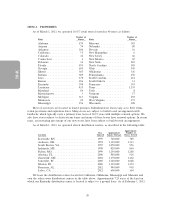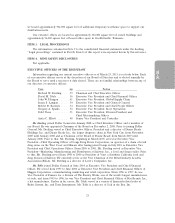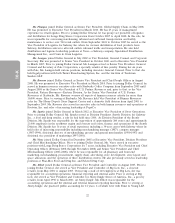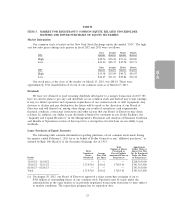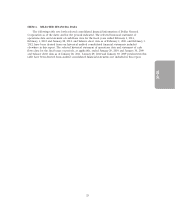Dollar General 2012 Annual Report Download - page 94
Download and view the complete annual report
Please find page 94 of the 2012 Dollar General annual report below. You can navigate through the pages in the report by either clicking on the pages listed below, or by using the keyword search tool below to find specific information within the annual report.
10-K
Failure to attract and retain qualified employees, particularly field, store and distribution center
managers, while controlling labor costs, as well as other labor issues, could adversely affect our financial
performance.
Our future growth and performance depends on our ability to attract, retain and motivate qualified
employees, many of whom are in positions with historically high rates of turnover such as field
managers and distribution center managers. Our ability to meet our labor needs, while controlling our
labor costs, is subject to many external factors, including competition for and availability of qualified
personnel in a given market, unemployment levels within those markets, prevailing wage rates,
minimum wage laws, health and other insurance costs, and changes in employment and labor laws
(including changes in the process for our employees to join a union) or other workplace regulation
(including changes in ‘‘entitlement’’ programs such as health insurance and paid leave programs). To
the extent a significant portion of our employee base unionizes, or attempts to unionize, our labor costs
could increase. In addition, we are evaluating the potential future impact of recently enacted
comprehensive healthcare reform legislation, which will likely cause our healthcare costs to increase.
While the significant costs of the healthcare reform legislation will occur after 2013, if at all, due to
provisions of the legislation being phased in over time, changes to our healthcare costs structure could
have a significant negative effect on our business. Our ability to pass along labor costs to our customers
is constrained by our low price model.
Our profitability may be negatively affected by inventory shrinkage.
We are subject to the risk of inventory loss and theft. We experience significant inventory
shrinkage, and we cannot assure you that incidences of inventory loss and theft will decrease in the
future or that the measures we are taking will effectively reduce the problem of inventory shrinkage.
Although some level of inventory shrinkage is an unavoidable cost of doing business, if we were to
experience higher rates of inventory shrinkage or incur increased security costs to combat inventory
theft, our financial condition could be affected adversely.
Our cash flows from operations may be negatively affected if we are not successful in managing our
inventory balances.
Our inventory balance represented approximately 50% of our total assets exclusive of goodwill and
other intangible assets as of February 1, 2013. Efficient inventory management is a key component of
our business success and profitability. To be successful, we must maintain sufficient inventory levels to
meet our customers’ demands without allowing those levels to increase to such an extent that the costs
to store and hold the goods unduly impacts our financial results. If our buying decisions do not
accurately predict customer trends or purchasing actions, we may have to take unanticipated
markdowns to dispose of the excess inventory, which also can adversely impact our financial results. We
continue to focus on ways to reduce these risks, but we cannot assure you that we will be successful in
our inventory management. If we are not successful in managing our inventory balances, our cash flows
from operations may be negatively affected.
Because our business is seasonal to a certain extent, with the highest volume of net sales during the
fourth quarter, adverse events during the fourth quarter could materially affect our financial statements as a
whole.
We generally recognize our highest volume of net sales during the Christmas selling season, which
occurs in the fourth quarter of our fiscal year. In anticipation of this holiday, we purchase substantial
amounts of seasonal inventory and hire many temporary employees. An excess of seasonal merchandise
inventory could result if our net sales during the Christmas selling season were to fall below either
seasonal norms or expectations. If our fourth quarter sales results were substantially below expectations,
our financial performance and operating results could be adversely affected by unanticipated
15


